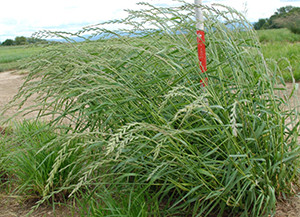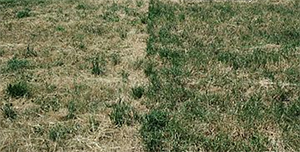More festulolium varieties than any other plant breeder
Festulolium is one of the great success stories of modern grass-breeding science. Depending on the variety and the growing conditions, festulolium provides from 5% to 25% more forage, and one to two years' more persistency. Festulolium stands up better against winter frosts, drought, and disease; it produces a higher output, per hectare; and offers a better feed value.
01/03/2016
More than the sum of its parts
Festulolium is a highly successful cross between a fescue and a ryegrass. It works because the hybrid performs better than its individual components.
Our Product Manager, Ole Grønbæk, explains: "When we run trials on festulolium varieties and compare them with the parent species, we almost always find an improvement in yield, persistency, or feeding value. In fact it is common to find improvements in several – perhaps even all – of these features."
He adds: "We have been successful because we have managed to combine vital genes from both parent species. Our created festulolium species displays the properties of both species. It is an example of how you can add two and two to make five."
At DLF, we have many decades' worth of experience in developing varieties of festulolium. As a result, we now hold the largest festulolium portfolio of any seed breeder. Our research continues, of course, as we strive to improve forage yield and quality under a wide range of climates.
Festulolium varieties split into two main groups: ryegrass types and tall fescue types. Here is our simple portrait of their uses and characteristics.
Portrait 1: Ryegrass type of festulolium
 Can be used as a direct replacement for Italian ryegrass, hybrid ryegrass or perennial ryegrass in mixtures for up to three years. Produces a higher yield and has better stress tolerance and persistency.
Can be used as a direct replacement for Italian ryegrass, hybrid ryegrass or perennial ryegrass in mixtures for up to three years. Produces a higher yield and has better stress tolerance and persistency.
The growth habit is almost identical to Italian ryegrass. Spring growth is early – one week ahead of perennial ryegrass – and post-cut recovery is very quick.
Rapid establishment is similar to Italian ryegrass, and feeding quality is similar or better.
The leaves are smooth like Italian ryegrass, and some stems may occur in regrowth. The forage yield is better than Italian ryegrass and hybrid ryegrass – and much better than perennial ryegrass.

Relative yield, GJ NEL/ha of perennial ryegrass (mixture of diploid and tetraploid varieties and festulolium, type ryegrass ACHILLES, PERSEUS and LOFA. Variety testing Denmark, third year.
Example of persistency during a dry summer in Germany

Photo shows Cocksfoot in a mixture with festulolium, type ryegrass.
Portrait 2: Tall fescue type of festulolium
 Ideally suited to dry or stressed environments where yield and persistency are the primary drivers. Can be used as a direct replacement for tall fescue in medium- and long-term mixtures where it improves the feeding value.
Ideally suited to dry or stressed environments where yield and persistency are the primary drivers. Can be used as a direct replacement for tall fescue in medium- and long-term mixtures where it improves the feeding value.
Tall fescue-type festulolium roots very deep, providing a drought tolerance similar to cocksfoot and pure tall fescue. The persistency of well-managed swards is between six and eight years, also similar to tall fescue.
Spring growth is very early, with no stems in regrowth. The plants stand erect with low tillering capacity. Establishment is faster at low temperatures compared to tall fescue, and slower than ryegrass.
The feed value or digestibility is better than Tall Fescue but not on the level of Perennial Ryegrass. Sugar-content is low, but protein levels are high: the forage yield is very high.
Better feed value than tall fescue |
||||||
|---|---|---|---|---|---|---|
% protein in drymatter |
% sugar in drymatter |
% NDF in drymatter |
Digestible NDF |
Digestible organic matter |
NEL, mj/kg drymatter |
|
| Festulolium, type tall fescue | 14,5 | 10,5 | 49,6 | 66,5 | 72,6 | 6,16 |
| Tall fescue | 14,0 | 10,4 | 50,6 | 64,3 | 71,0 | 6,00 |
| Perennial ryegrass | 12,9 | 15,7 | 45,4 | 67,1 | 74,6 | 6,28 |
Quality of festulolium FOJTAN, type tall fescue. All grasses in the trial are mixed with white clover. Perennial ryegrass is a mixture of diploid and tetraploid varieties. Average of four trials, variety testing Denmark.
Please contact your local DLF representative to learn more about how festulolium can increase forage in your local area.

